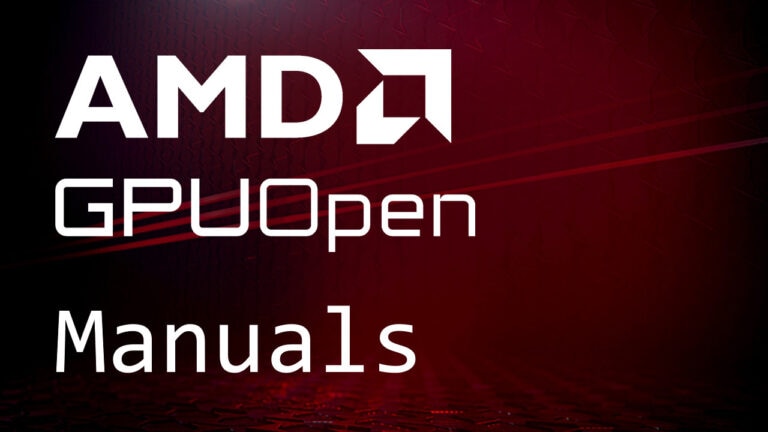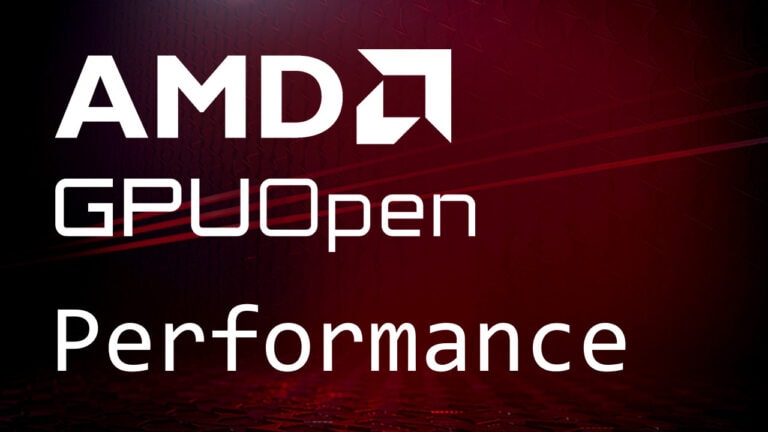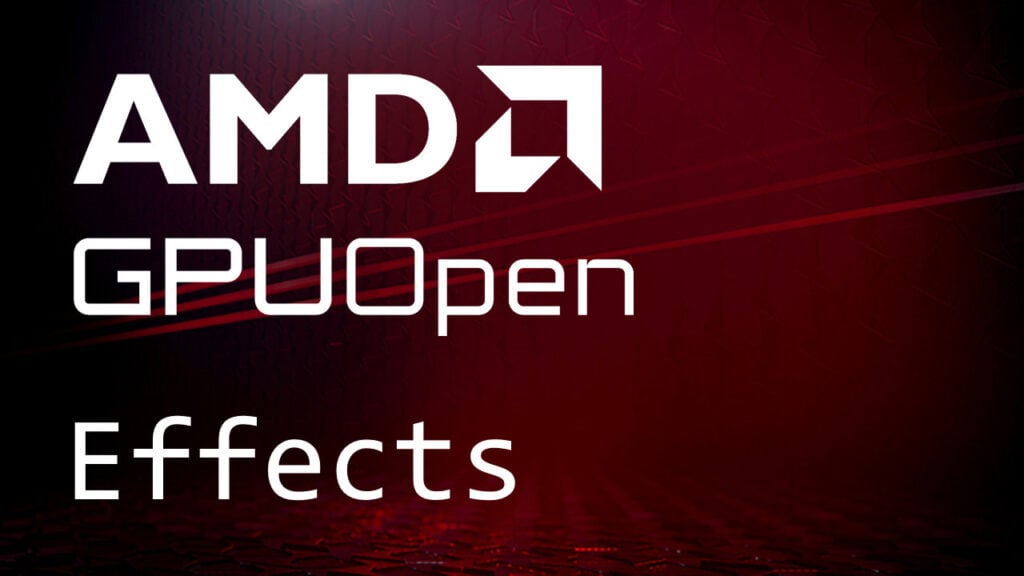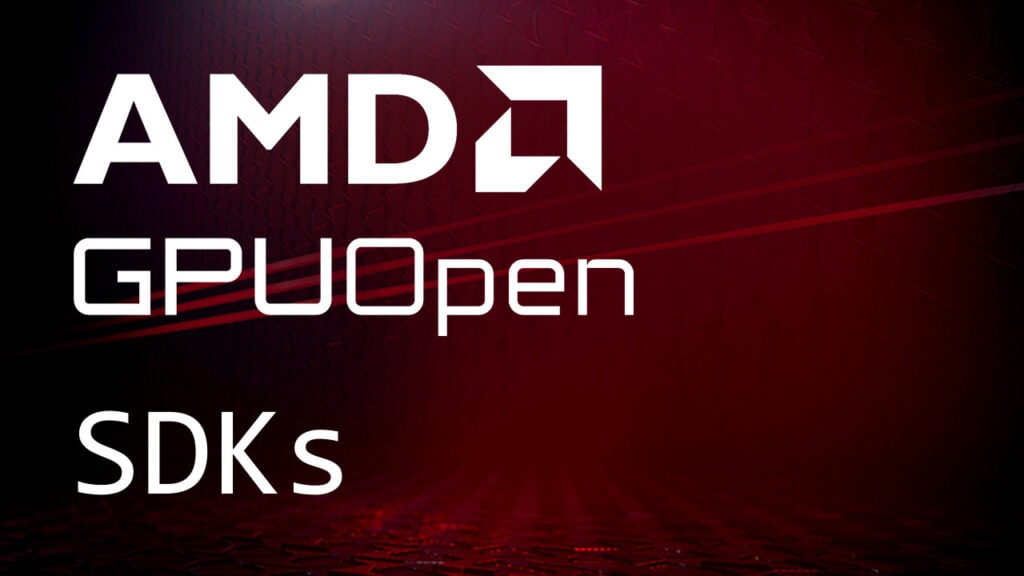AntiLag
Demonstrates how to access AMD Radeon™ Anti-Lag options, and perform related testing when programming with ADLX.
Command Prompts
| Command Prompt | Description |
|---|---|
| 1 | Display Radeon Anti-Lag support |
| 2 | Display current Radeon Anti-Lag state |
| 3 | Enable Radeon Anti-Lag |
| 4 | Disable Radeon Anti-Lag |
| 5 | Get Radeon Anti-Lag Level |
| 6 | Set Radeon Anti-Lag Level to Anti-Lag |
| 7 | Set Radeon Anti-Lag Level to Anti-Lag Next |
| M/m | Display the main menu |
| Q/q | Quit the application |
Sample Path
/Samples/C/3DGraphics/AntiLag
Code
//
// Copyright (c) 2021 - 2023 Advanced Micro Devices, Inc. All rights reserved.
//
//-------------------------------------------------------------------------------------------------
#include "SDK/ADLXHelper/Windows/C/ADLXHelper.h"
#include "SDK/Include/I3DSettings.h"
// Display Anti-Lag support
void ShowAntiLagSupport(IADLX3DAntiLag* d3dAntiLag, IADLX3DAntiLag1* d3dAntiLag1);
// Display current Anti-Lag state
void GetAntiLagState(IADLX3DAntiLag* d3dAntiLag, IADLX3DAntiLag1* d3dAntiLag1);
// Set Anti-Lag state
void SetAntiLagState(IADLX3DAntiLag* d3dAntiLag, IADLX3DAntiLag1* d3dAntiLag1, int index);
// Display current Anti-Lag Level
void GetAntiLagLevel(IADLX3DAntiLag1* d3dAntiLag1);
// Set Anti-Lag Level
void SetAntiLagLevel(IADLX3DAntiLag1* d3dAntiLag1, ADLX_ANTILAG_STATE level);
// Menu
void MainMenu(int alnSupport);
// Menu control
void MenuControl(IADLX3DAntiLag* d3dAntiLag, IADLX3DAntiLag1* d3dAntiLag1);
int main()
{
// Define return code
ADLX_RESULT res = ADLX_FAIL ;
// Initialize ADLX
res = ADLXHelper_Initialize();
if (ADLX_SUCCEEDED (res))
{
// Get system services
IADLXSystem* sys = ADLXHelper_GetSystemServices();
// Get GPUs
IADLXGPUList* gpus = NULL;
res = sys->pVtbl->GetGPUs(sys, &gpus);
// Get 3DSettings service
IADLX3DSettingsServices* d3dSettingSrv = NULL;
res = sys->pVtbl->Get3DSettingsServices(sys, &d3dSettingSrv);
if (ADLX_SUCCEEDED (res))
{
// Get GPU interface
IADLXGPU* gpu = NULL;
adlx_uint index = 0;
res = gpus->pVtbl->At_GPUList(gpus, index, &gpu);
// Get AntiLag interface
IADLX3DAntiLag* d3dAntiLag = NULL;
IADLX3DAntiLag1* d3dAntiLag1 = NULL;
res = d3dSettingSrv->pVtbl->GetAntiLag(d3dSettingSrv, gpu, &d3dAntiLag);
if (ADLX_SUCCEEDED (res))
{
// Get AntiLag1 interface
ADLX_RESULT resALN = d3dAntiLag->pVtbl->QueryInterface(d3dAntiLag, IID_IADLX3DAntiLag1, (void**)(&d3dAntiLag1));
MainMenu(d3dAntiLag1 != NULL ? 1 : 0);
MenuControl(d3dAntiLag, d3dAntiLag1);
}
// Release the d3dAntiLag interface
if (d3dAntiLag != NULL)
{
d3dAntiLag->pVtbl->Release(d3dAntiLag);
d3dAntiLag = NULL;
}
if (d3dAntiLag1 != NULL)
{
d3dAntiLag1->pVtbl->Release(d3dAntiLag1);
d3dAntiLag1 = NULL;
}
// Release the GPU interface
if (gpu != NULL)
{
gpu->pVtbl->Release(gpu);
gpu = NULL;
}
}
else
{
printf("Failed to get 3DSettings services\n");
}
// Release the 3DSettingsService interface
if (d3dSettingSrv != NULL)
{
d3dSettingSrv->pVtbl->Release(d3dSettingSrv);
d3dSettingSrv = NULL;
}
// Release the GPUs list interface
if (gpus != NULL)
{
gpus->pVtbl->Release(gpus);
gpus = NULL;
}
}
else
{
printf("ADLX initialization failed\n");
return 0;
}
// Destroy ADLX
res = ADLXHelper_Terminate();
printf("Destroy ADLX res: %d\n", res);
// Pause to see the print out
system("pause");
return 0;
}
void ShowAntiLagSupport(IADLX3DAntiLag* d3dAntiLag, IADLX3DAntiLag1* d3dAntiLag1)
{
adlx_bool supported = false;
if (d3dAntiLag1 != NULL)
d3dAntiLag1->pVtbl->IsSupported(d3dAntiLag1, &supported);
else
d3dAntiLag->pVtbl->IsSupported(d3dAntiLag, &supported);
printf("\tIsSupported: %d\n", supported);
}
void GetAntiLagState(IADLX3DAntiLag* d3dAntiLag, IADLX3DAntiLag1* d3dAntiLag1)
{
adlx_bool enabled = false;
if (d3dAntiLag1 != NULL)
d3dAntiLag1->pVtbl->IsEnabled(d3dAntiLag1, &enabled);
else
d3dAntiLag->pVtbl->IsEnabled(d3dAntiLag, &enabled);
printf("\tIsEnabled: %d\n", enabled);
}
void SetAntiLagState(IADLX3DAntiLag* d3dAntiLag, IADLX3DAntiLag1* d3dAntiLag1, int index)
{
ADLX_RESULT res;
if (d3dAntiLag1 != NULL)
res = d3dAntiLag1->pVtbl->SetEnabled(d3dAntiLag1, index == 0);
else
res = d3dAntiLag->pVtbl->SetEnabled(d3dAntiLag, index == 0);
printf("\tReturn code is: %d (0 means Success)\n", res);
}
void GetAntiLagLevel(IADLX3DAntiLag1* d3dAntiLag1)
{
ADLX_ANTILAG_STATE level = ANTILAG ;
ADLX_RESULT res = d3dAntiLag1->pVtbl->GetLevel(d3dAntiLag1, &level);
if (ADLX_SUCCEEDED (res))
printf("\tLevel: %s\n", (level == ANTILAG ? "Anti-Lag" : "Anti-Lag Next"));
}
void SetAntiLagLevel(IADLX3DAntiLag1* d3dAntiLag1, ADLX_ANTILAG_STATE level)
{
ADLX_RESULT res = d3dAntiLag1->pVtbl->SetLevel(d3dAntiLag1, level == ANTILAGNEXT );
printf("\tReturn code is: %d (0 means Success)\n", res);
}
void MainMenu(int alnSupport)
{
printf("\tChoose from the following options:\n");
printf("\t->Press 1 to display Anti-Lag support\n");
printf("\t->Press 2 to display current Anti-Lag state\n");
printf("\t->Press 3 to enable Anti-Lag\n");
printf("\t->Press 4 to disable Anti-Lag\n");
if (alnSupport == 1)
{
printf("\t->Press 5 to Get Anti-Lag Level\n");
printf("\t->Press 6 to Set Anti-Lag level to Anti-Lag\n");
printf("\t->Press 7 to Set Anti-Lag level to Anti-Lag Next\n");
}
printf("\t->Press Q/q to quit the application\n");
printf("\t->Press M/m to display menu options\n");
}
void MenuControl(IADLX3DAntiLag* d3dAntiLag, IADLX3DAntiLag1* d3dAntiLag1)
{
int num = 0;
while ((num = getchar()) != 'q' && num != 'Q')
{
switch (num)
{
// Display Anti-Lag support
case '1':
ShowAntiLagSupport(d3dAntiLag, d3dAntiLag1);
break;
// Display current Anti-Lag state
case '2':
GetAntiLagState(d3dAntiLag, d3dAntiLag1);
break;
// Set Anti-Lag state
case '3':
case '4':
SetAntiLagState(d3dAntiLag, d3dAntiLag1, num - '3');
break;
case '5':
GetAntiLagLevel(d3dAntiLag1);
break;
case '6':
SetAntiLagLevel(d3dAntiLag1, ANTILAG );
break;
case '7':
SetAntiLagLevel(d3dAntiLag1, ANTILAGNEXT );
break;
// Display menu options
case 'm':
case 'M':
MainMenu(d3dAntiLag1 != NULL ? 1 : 0);
break;
default:
break;
}
}
}













